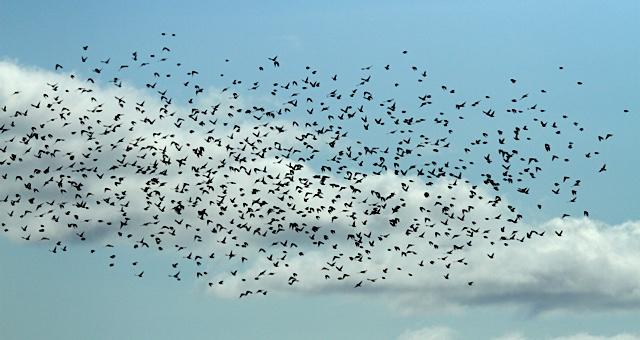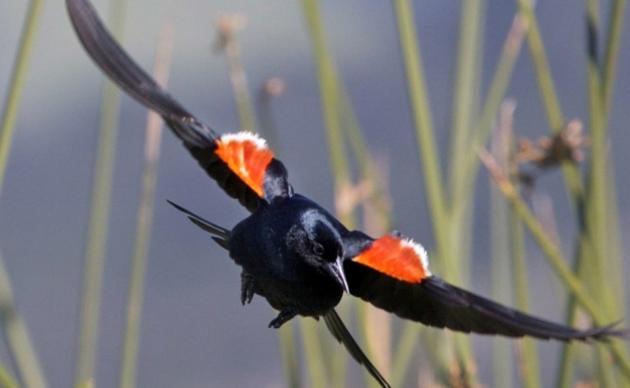
Debi Shearwater is fired up about Tricolored Blackbirds.
If you thought that the California birder most famous for her marine expeditions would be bored by the land birds, think again. This past weekend, she joined an army of volunteers scouring the state for the rare Tricolored Blackbirds as part of an annual population survey. She spent nearly every daylight hour in the field, lighting up her Facebook page in the evenings with excited posts about what she saw.
“I discovered two new colonies in San Benito County and there were two California Condors flying over them,” she says. “Where else can that happen? It was a genuine California moment.”
Shearwater has been participating in the Tricolored Blackbird surveys organized by UC Davis since 1997, when the first such survey took place.
She says that she is drawn to the bird because of its numerous mysteries.
“It’s a complicated bird,” she says. “We’ve learned a lot about it since the first survey in 1997, but there is still a lot to understand.”
Shearwater says she spent several hours watching the colonies in San Benito County over the weekend, trying to understand the interactions between the males and females.
“I was watching the females go back and forth with nesting material, and the males were just kind of escorting them around. They weren’t carrying anything, but they were sticking by the females. I just kept asking myself, Why are the males there?”
Like researchers and conservationists, Shearwater is concerned at the declining trend for the Tricolored Blackbird, whose population has fallen 44 percent since 2011.
“I hate to see any bird go down,” she says. “It’s near endemic to California, so I feel like it’s up to us.”
While the Tricolored Blackbirds continue to struggle in California’s Central Valley, Shearwater feels their plight is on the upswing in the coastal valleys.
“San Benito County is great for the birds,” she argues. “There aren’t the conflicts here that you see in the Central Valley."
Because so much of their original wetland habitat is gone, Tricolored Blackbirds in the Central Valley often set up their giant colonies of 10,000 birds or more on dairy farms. This creates a problem when the farmer needs to harvest the field before the young birds have fledged. Thousands of newborn Tricolored Blackbirds can be lost in just a few minutes.
Audubon California, working with the California Department of Fish and Wildlife and the federal Natural Resources Conservation Service, have partnered with the dairy industry to reach agreements with farmers to protect these colonies. In 2016, for the first time, this partnership was able to protect every Tricolored Blackbird colony found on dairy farms.
For Shearwater, the Tricolored Blackbird colonies in San Benito County are further proof that the area has many secrets left untold when it comes to birds.
“I call San Benito the Lost County,” Shearwater says. “Every neighboring county is heavily birded, but not this one. It’s never been thoroughly ornithologically surveyed, and I think there are a lot of discoveries to be made.”
Even though the weekend’s survey is over, Shearwater isn’t easing up. She has plans to go back out into the field this week to check out the colonies and perhaps even find more.
By Garrison Frost
$5 Saves 5 Birds
We’ve done the math -- guaranteeing that a Tricolored Blackbird can fully fledge works out to about $1/bird. It’s a small price to pay to protect this beautiful species.




